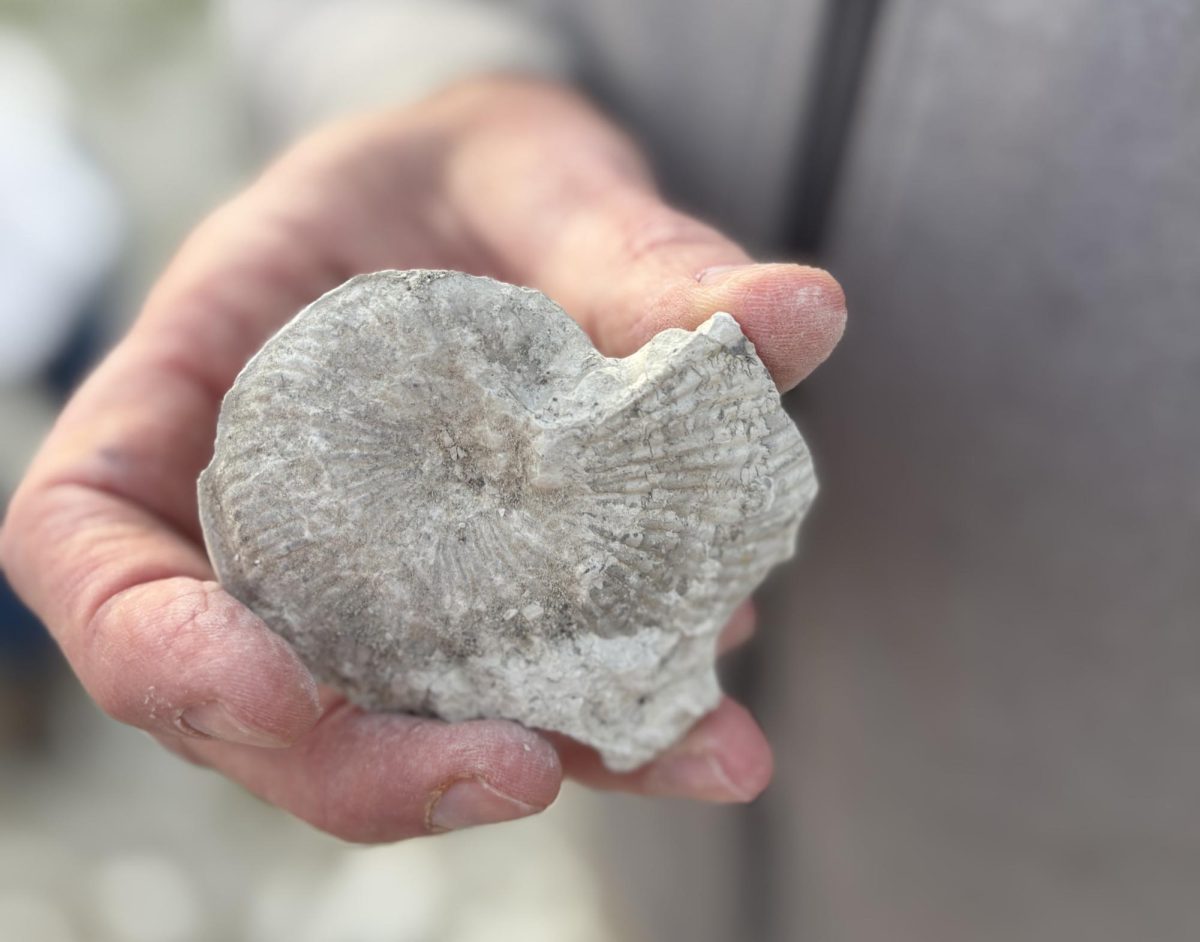In the heart of central Texas, surrounded by fast food chains, cookie-cutter homes and mega stores, a group of University of Wisconsin-Whitewater students uncovered something far more enduring than the rapidly expanding city of Killeen – something timeless.
Led by Rex Hanger, a professor of geology with a deep appreciation for Earth’s history, a diverse team of student geologists, paleontologists, geographers and environmental scientists from Whitewater embarked on a two-day road trip to Killeen – Hanger’s hometown and a hotspot for geologic structures and ancient fossils.
There, the students unearthed remnants of long-extinct reef ecosystems, collected fossils and reflected on the fragile intersection between human development and the preservation of our planet’s prehistoric past.
“Reefs today are one of Earth’s biodiversity treasures that are endangered because of climate change, ocean acidification and other things like that,” Hanger said. “What doesn’t get talked about as much is that the human population is growing, and as it grows, especially in places that are economically privileged like the United States, there is a huge expansion of our footprint and infrastructure.”
Over the course of the trip, the group explored a wide range of fossil-rich sites, from drainage ditches behind restaurants or exposed rock areas at construction zones, to natural geologic formations and landmarks like Keys Valley Marl and the Enchanted Rock, a billion-year-old pink granite dome.
Despite the often overlooked urban settings, these locations were rich with ancient life that tells the story of former seas and the vanished ecosystems within them, built by oysters, rudist clams and other long-extinct reef-builders.
Students collected an array of fossils, including ammonites, heart urchins, devil’s toenails, clams and oysters – often working beside busy roads or behind the shadow of a grocery store.
“One of the things we’ve been able to prove on this trip is that even with small exposures, you can still see the evidence of past life,” Hanger said. “But that is progressively being lost with this march of human infrastructure over things.”
For the students on the trip, these discoveries didn’t only prove to be scientifically valuable – it was also deeply personal, shifting their perspectives, inspiring curiosity and sparking a stronger sense of purpose amid our ever-growing and changing culture.
“It’s like another world,” said Gwenyth Heidinger, a geography major. “We always want to leave everything and talk about aliens, but really, the aliens are in our past.”
Her favorite find was a geopetal structure – half filled with crystals, half with sediment – that helps geologists determine the orientation of rocks at the time they formed.
“It helps me find my own place in the world,” Hedinger said. “It’s good for the soul.”
For freshman Simon Weir, the trip offered insight into her future and herself.
“I really liked fossil hunting because I like paleontology,” Weir said. “But I also liked hiking more than I expected.”
When one of their collection sites was unexpectedly washed out, the group had to adjust and adapt – a lesson on the unpredictable nature of fieldwork.
“You understand just how interesting and also difficult the collection process can be,” Weir said. “Even if you end up not liking it, it’s still something new you tried and will give you more direction for your future.”
For these young scientists, the reefs became a symbol of resilience. These long-lost organisms and ecosystems preserved for millions of years reminded the group that life persists even after devastation.
“When you see all these little creatures at these fossil sites, I feel there’s a lot of hope to be felt there,” Weir said. “Things today are looking dire, and I think that we really need to take care of our planet, but even if things do go south and we aren’t able to stop it, that doesn’t mean that life itself is going to end.”
By the end of the journey, the students had formed a tight-knit connection, bonded not only by their sunburn and dirt-covered hands but by their shared wonder, love of science and their growing commitment to understanding and protecting Earth’s history.
Their findings will be cleaned, cataloged and archived – preserving the legacy of what may appear to be just another modern, capitalistic city, but in reality, rests atop a rich and ancient world, still whispering through scattered stones and pebbles to anyone willing to listen.
“Someday, they might have to tear the grocery store down to make something new,” Hanger said. “And guess what? Those 110 million-year-old rocks that have sat there that long are still waiting for you. It shows the permanence of life and environments on the Earth.”
In a world constantly evolving and pushing forward, these students had the rare opportunity to pause – and look back.




Lynn Hardginski • Apr 22, 2025 at 9:48 am
What a great article and a wonderful opportunity for the students!
simon w. • Apr 21, 2025 at 9:48 am
absolutely beautiful, kayla!! we absolutely loved having you on the trip, and i do hope i get to see you more in the coming years.